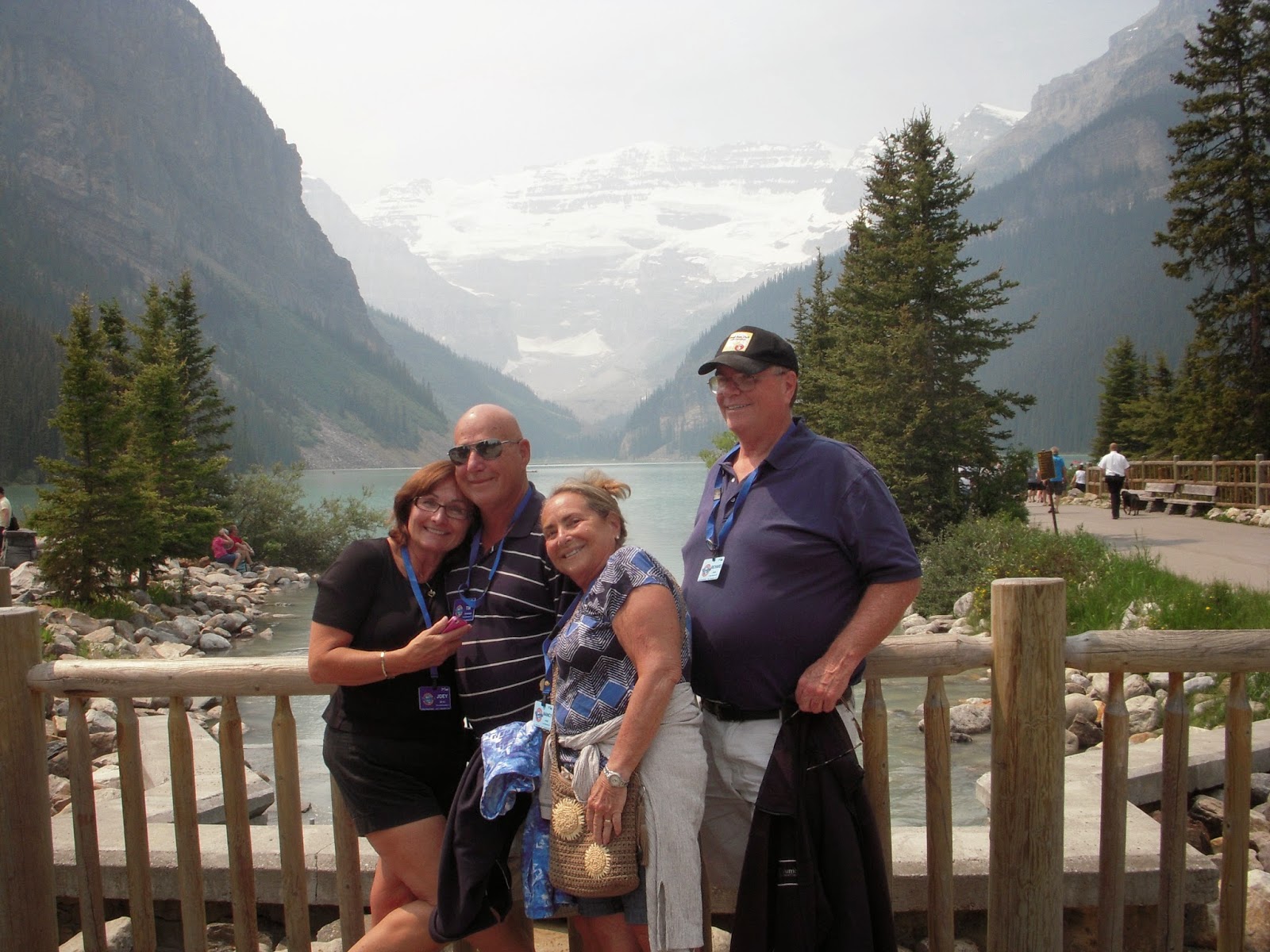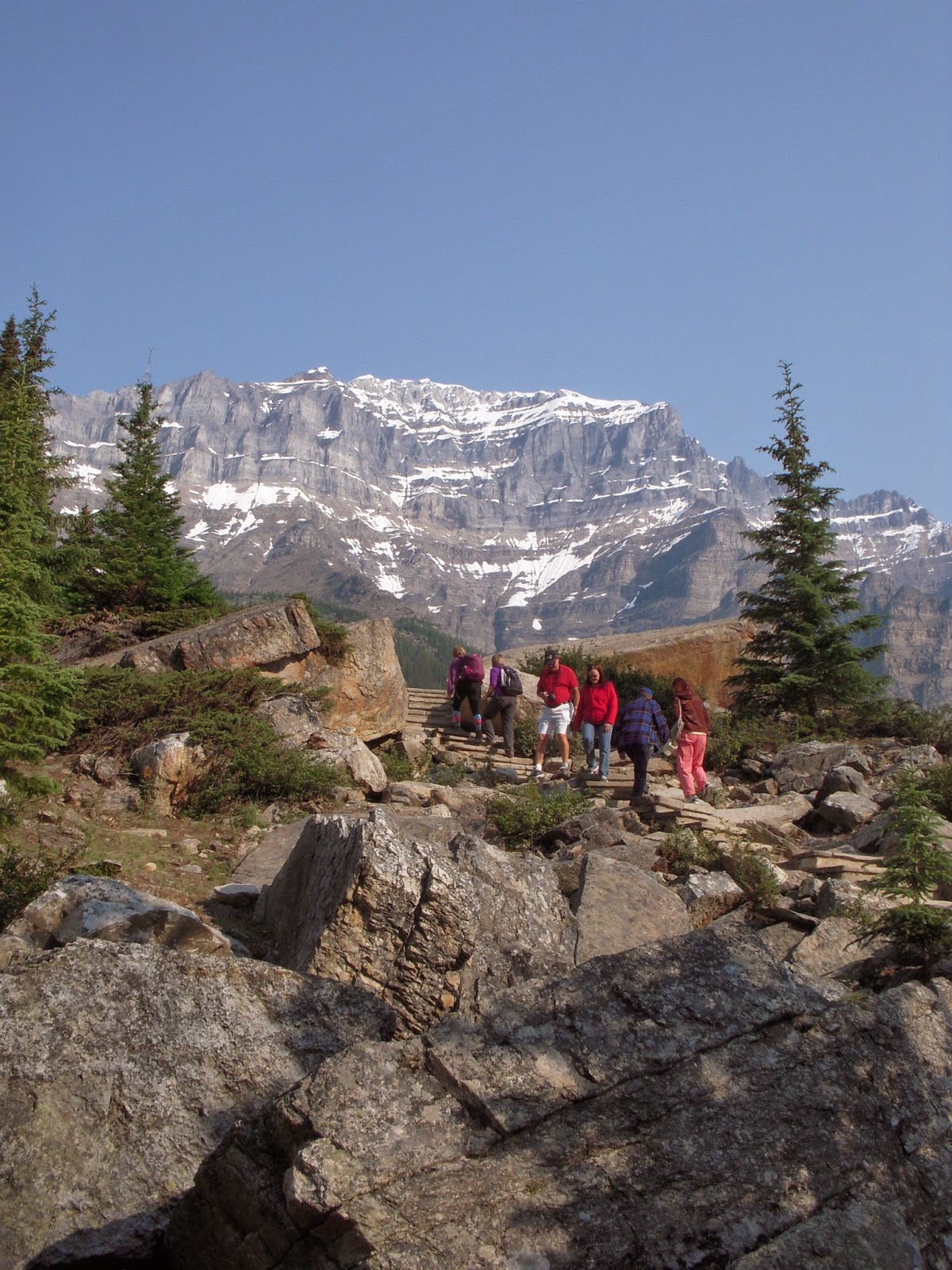The Canadian Rockies
Banff National Park
WOW!!
This was the Scenery Driving!
Our Friends From Vermont and New Hampshire!

Looking for a Handout!
The Only Thing You Can Say Is
WOW!
Enjoy The Pictures!
WOW!
Like a Postcard Picture!
Johnston Canyon
Hank and Kathy enjoying the Canyon Views!
Lake Louise is a hamlet in Alberta, Canada within Improvement District No. 9 Banff (Banff National Park).The hamlet is named for the nearby Lake Louise, which in turn was named after the Princess Louise Caroline Alberta (1848–1939), the fourth daughter of Queen Victoria, and the wife of John Campbell, the 9th Duke of Argyll, who was the Governor General of Canada from 1878 to 1883.
The hamlet was originally called Laggan, and was a station along the Canadian Pacific Railway route. It was built in 1890. The rail station building was preserved and moved into Heritage Park in Calgary.
Lake Louise - Chateau!
The Haze is From Local Fires Burning Nearby!

Tim & Joey

Tim & Joey
Joined By
Nancy & Richard
All Fellow New Yorkers
Glacial Runoff!
Sure is Cold!
Kicking Horse Pass (el. 1627 m, 5339 ft) is a high mountain pass across the Continental Divide of the Americas of the Canadian Rockies on the Alberta/British Columbia border, and lying within Yoho and Banff National Parks. A National Historic Site of Canada, the pass is of historical significance because the main line of the Canadian Pacific Railway (CPR) was constructed between Lake Louise, Alberta and Field, British Columbia using this route in 1880s, in preference to the originally planned route through the more northerly Yellowhead Pass.
The pass was first explored by Europeans in 1858 by the Palliser Expedition led by Captain John Palliser. The pass and the adjacent Kicking Horse River were given their names after James Hector, a naturalist, geologist, and surgeon who was a member of the expedition, was kicked by his horse while exploring the region.
The original route of the CPR between the summit of the pass near Wapta Lake and Field was known as "The Big Hill"; with a ruling gradient of 4.5 percent (1 in 23), it was the steepest stretch of main-line railroad in North America.
Due to frequent accidents and expensive helper engines associated with railroading in the pass, the CPR opened a pair of Spiral Tunnels in 1909 that replaced the direct route. Although these tunnels add several kilometres to the route, the ruling grade was reduced to a more manageable 2.2 percent.
The Trans-Canada Highway was constructed through the pass in 1962 following essentially the original CPR route. It reaches its highest point at the Kicking Horse Pass with an elevation of 1,643 metres (5,390 ft).
Divide Creek, a creek that forks onto both sides of the Continental Divide, is located at Kicking Horse Pass.

So Many beautiful Waterfalls!
This is Emerald Lake!
The Flowers were sooo Spectacular!
As we took the Bus up to the lakes
We encountered a series of Switch Backs!
The bus had to back up the middle section between the two hairpin turns
as the bus was too long and the turn too sharp to make.
WOW!
Next Stop
Jasper!


















































No comments:
Post a Comment